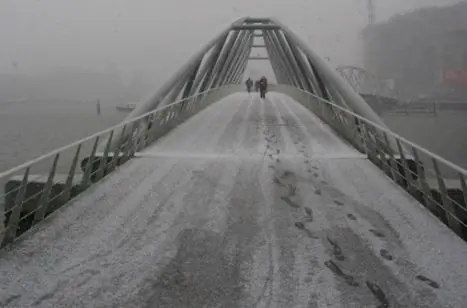
If you have lived in a cold region for a while, you may be well aware of the phenomenon that bridges ice up much faster than roads do. In fact, colder regions often have road signs advising people about the fact that even if the roads don’t have ice on them in the colder months, the bridges may be slippery and iced over. We find out the reason why bridges freeze before roads in the same area do.
Bridges are exposed from both above and below
Roadways are built over the ground and receive a lot of warmth from the soil below. Bridges, on the other hand are suspended much higher above the ground and thus when the cold sets in, they are exposed to lowered temperatures from both above as well as below. This causes them to ice up way before there is ice on the roads.
Bridges are often located over cold spots
Most bridges are located over rivers, deep ravines or some other water body. In the colder months, these water bodies freeze over and the temperature of the air directly above them also lowers significantly. This essentially exposes the bridges to temperatures that are lower than the temperatures that the roads are exposed to by virtue of lying over warmth-radiating soil.
The material of the bridges loses heat easily
Bridges are made using materials that lose heat easily. Steel and iron are also excellent heat conductors which means that any stone or concrete used in the construction of the bridge too cools down much faster when the ambient temperatures are very cold. Roads on the other hand, have the advantage of being constructed out of asphalt with an underlying layer of chipped stone which retains the heat it receives from the ground underneath.